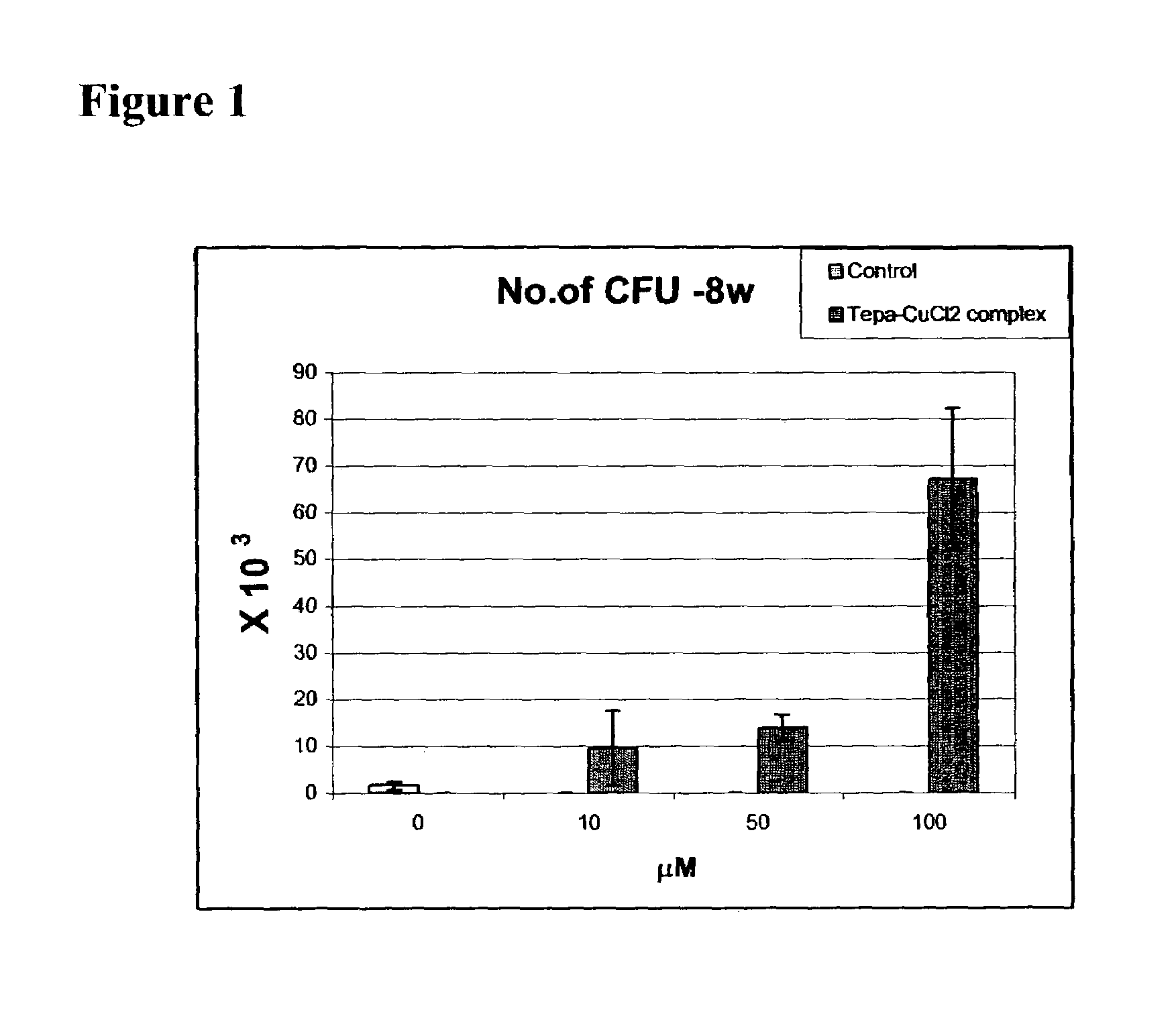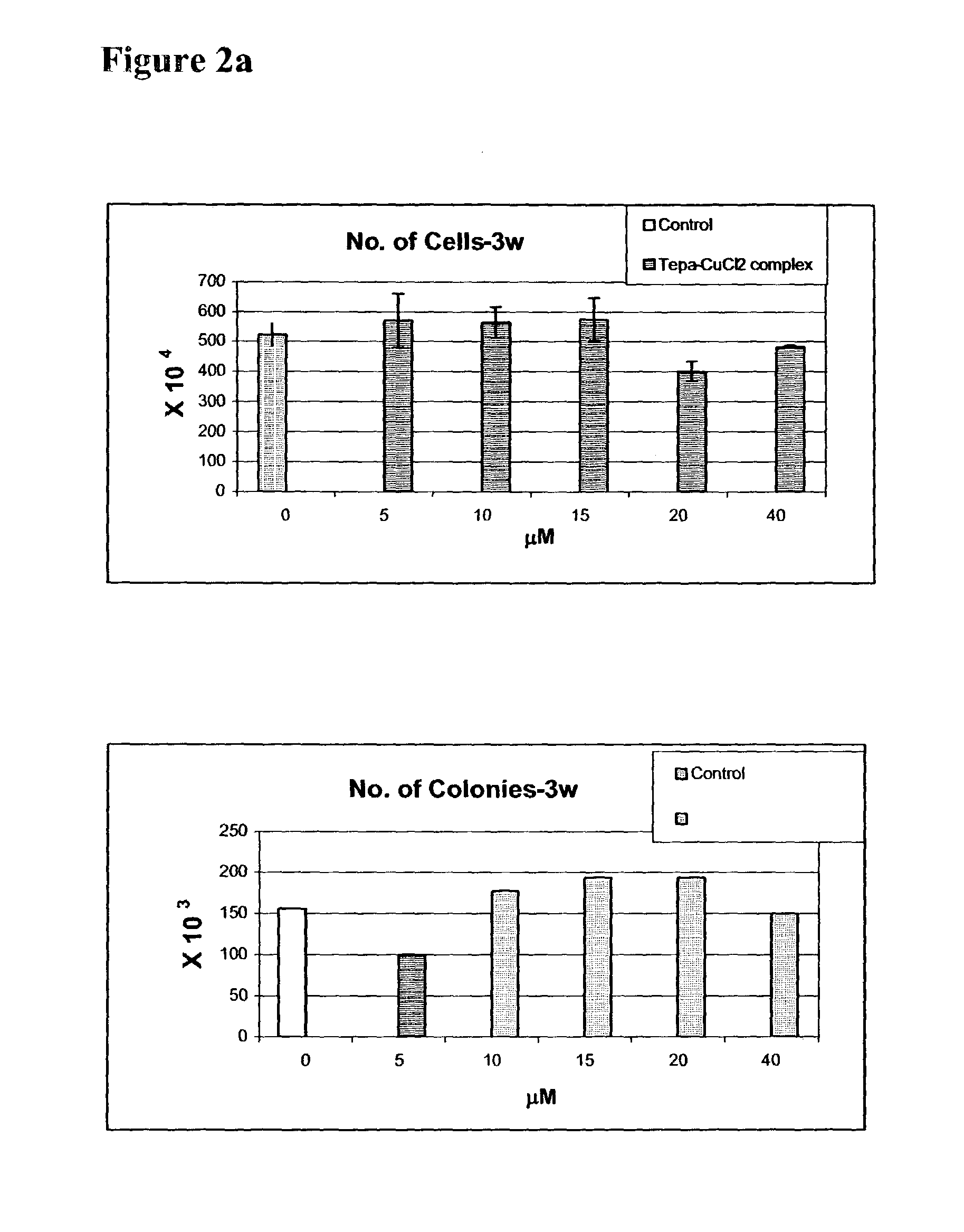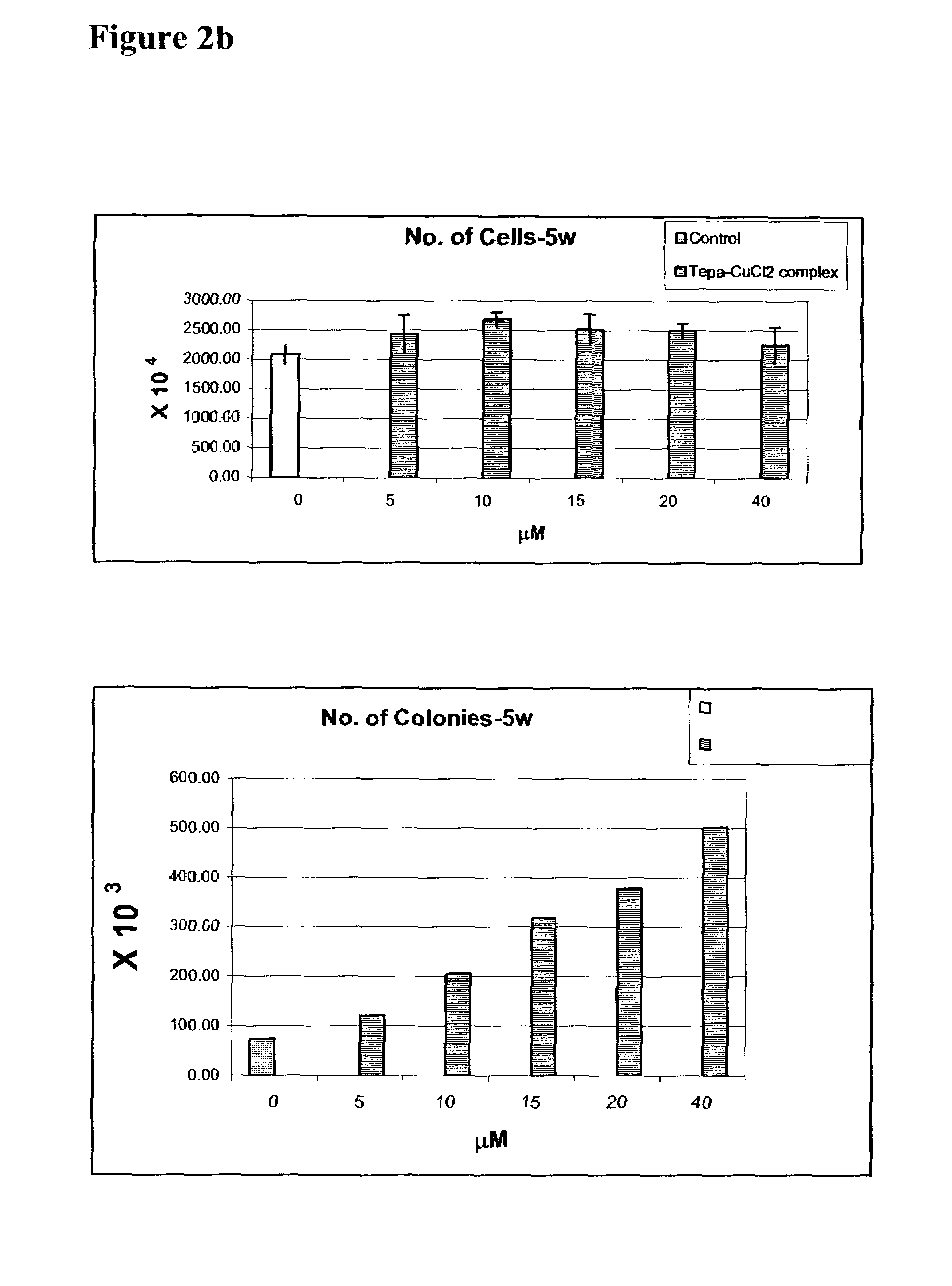Methods of expanding stem and progenitor cells and expanded cell populations obtained thereby
a technology of stem cells and progenitor cells, applied in the field of exvivo and invivo control of the proliferation and differentiation of stem cells, can solve the problems of halting cell division, limiting the differentiation process, and unable to obtain a large number of stem cells, especially human adult stem cells directly from a tissue of choice, so as to inhibit stem differentiation, expand the stem population, and inhibit the effect of stem differentiation
- Summary
- Abstract
- Description
- Claims
- Application Information
AI Technical Summary
Benefits of technology
Problems solved by technology
Method used
Image
Examples
example 1
Effects of TEPA-Cu Chelate on the Expansion of Stem and Progenitor Cells Ex Vivo
Experimental Procedures
[0427]Preparation of Tetraethylenepentamine (TEPA) and copper chelate: TEPA·5HCl (3 mmol, 1.1 gram, obtained from Sigma) was treated with a 15 ml solution of 1N NaOH in MeOH and centrifuged thereafter at 3,000 rpm for 5 minutes, so as to separate the NaCl precipitate. The remaining supernatant solution was diluted with 120 ml MeOH and a 30 ml aqueous solution of 3 mmol CuCl2 was added thereto, forming a bright blue colored solution. The obtained solution was evaporated under vacuum at 25-30° C., re-suspended in about 100 ml MeOH, and evaporated under vacuum at 25-30° C., twice, in order to remove residual water. The residue was then dissolved in 15 ml isopropanol and the resulting NaCl precipitate was removed by filtration. The filtrate solution was thereafter diluted in 45 ml diethyl ether and re-crystallized at 8-10° C. for 2 weeks. The solution was then filtered out and the dark...
example 2
Comparative Effects of TEPA-Cu Chelate and TEPA Chelator on the Cellular Copper Content of Stem Cells
Experimental Procedures
[0442]Cell cultures: Cultures of enriched CD34+ cell fraction were generated, maintained and analyzed as described in Example 1 above.
[0443]Copper Determination: Cells were harvested by centrifugation at 1000 g for 5 minutes. The cell pellet was washed three times in PBS. Aliquots containing 2×106 cells were then transferred into a metal-free Eppendorf tube and pelleted by centrifugation at 1000 g. The cell pellet was re-suspended in 0.03 M ultra-pure nitric acid to give a concentration of 1×107 cells / ml. The cells were sonicated and then analyzed in duplicate by a Perkin Elmer graphite furnace atomic absorption spectrophotometer at a wavelength of 324.7 nm and a 0.7 slit width. The following times and temperatures were used: drying at 95° C. for 45 seconds with a 15-s ramp; charring at 900° C. for 30 seconds with a 10-s ramp, and atomization at 900° C. for 10 ...
example 3
Comparative Effects of TEPA-Cu Chelate and TEPA Chelator on the Proliferation and Differentiation of Stem and Progenitor Cells
Experimental Procedures
[0446]Cell cultures: Cultures of enriched CD34+ cell fraction were carried out as described in the experimental procedures section of Example 1 above.
[0447]Determination of the density of stem and progenitor subset populations following expansion: Following an incubation period, the CD34+ cells were re-selected using miniMACS Miltenyi kit. The purity of the positive fraction of selected CD34+ cells was confirmed by FACS analysis as well as by cell morphology analysis. The density of CD34+ cells, in proportion (percentage) to total cells, was determined directly via FACS analysis. The densities of CD34+ subset populations were determined from the purified CD34+ fraction. Re-selected CD34+ cells were stained with lineage specific antigens followed by FACS analysis to determine the percentage of the subset populations within the total numb...
PUM
| Property | Measurement | Unit |
|---|---|---|
| temperatures | aaaaa | aaaaa |
| density | aaaaa | aaaaa |
| humidity | aaaaa | aaaaa |
Abstract
Description
Claims
Application Information
 Login to View More
Login to View More - R&D
- Intellectual Property
- Life Sciences
- Materials
- Tech Scout
- Unparalleled Data Quality
- Higher Quality Content
- 60% Fewer Hallucinations
Browse by: Latest US Patents, China's latest patents, Technical Efficacy Thesaurus, Application Domain, Technology Topic, Popular Technical Reports.
© 2025 PatSnap. All rights reserved.Legal|Privacy policy|Modern Slavery Act Transparency Statement|Sitemap|About US| Contact US: help@patsnap.com



